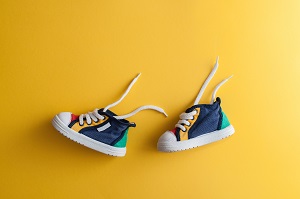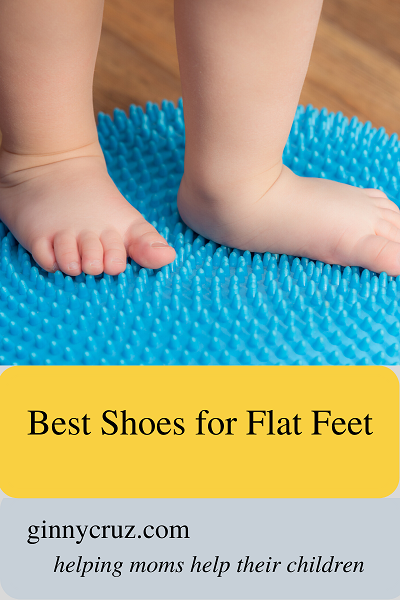Best Shoes for Flat Feet
Babies that are learning to stand and take steps usually have flat feet. The arches of their feet are not well-formed. As the small muscles in the feet get stronger and the ligaments that support the bones get stiffer, arches usually appear. Yes, flat feet can run in the family and are not, in and of themselves, a problem. If your baby is struggling to stand without support or remains hesitant to let go and take steps, the problem may be flat feet.
Doctors and physical therapists often recommend strengthening the feet and ankles of babies who are delayed with unsupported standing and walking. Some say to moms, “Let your baby walk barefoot, especially on sand and gravel. This will strengthen the feet and ankles.” In spite of these pronouncements, the debate continues on whether babies should wear shoes or go barefoot as they learn to walk.
There are other things to consider, as well. Cultural norms for one. Many cultures never allow their babies to go barefoot and others prefer it. Another consideration is that many young children spend most of the day in daycare. Daycare settings require children of certain ages wear closed-toe shoes. So for many, going barefoot a lot is not an option.
For children who struggle to stand and walk, the problem may not be that the feet are flat. The problem may be that the feet are weak. Some children have low muscle tone or lax ligaments. Some conditions, such as Down’s Syndrome, cause weakness in the muscles and ligaments. Regardless of the reason, simply strengthening the feet by walking barefoot isn’t going to cut it. Better footwear is needed.
If your baby has flat feet AND is struggling to stand without support or get going with walking on their own, this post is for you. Let’s get your baby standing and walking, by getting the right shoes.

Here’s a list of the characteristics to look for in a supportive shoe:
- A flat bottom with no heel or a minimal one
- A high top that supports the ankle. Low quarter shoes will not work
- A lace-up design that you can tighten to prevent slippage of the foot within the shoe. Most shoes come with nylon laces and these won’t stay tied. Buy a separate set of cotton laces to use instead.
- Shoes should fit properly and not be too tight or slip as either can cause pain and blisters
- A wide area for the toes is more comfortable than a narrow toe box
When your child’s shoe fits snugly and doesn’t slip, stays tied, and supports the ankle, your child “feels more stable.” This feeling provides confidence and they may try more often to let go of the couch and stand. Confidence builds and they try to take a step.
Some children eventually get strong enough to not need a shoe that is this supportive. Others continue to need them and only time will tell. In the meantime, try different shoes for your baby and see what happens.
Gently-used walking shoes for babies are out there. Many moms find great deals at garage sales or online exchanges. If money is an issue, try those options first. If you shop in a store, always take your baby along and try on the shoes. Make sure the toes have room to grow and spread out. Check that the shoe doesn’t slide up and down the heel. Again, buy cotton laces and use those unless you really want to continually retie shoes or search for shoes that are lost.
Many moms prefer the Stride Rite brand but these are pricey. They aren’t the only ones that will do the trick as long as you know what characteristics you are looking for (see list above). Boots can be good as long as they aren’t heavy or have a thick sole. A thick bottom makes it harder for your baby to feel the ground. Some boots have bottoms that are too grippy and cause tripping. Also, boots can appear supportive yet your baby’s foot is “swimming” around inside. Really check for slippage of the heel in boots!
Finally, I know these types of shoes aren’t fashionable or pretty. It’s easier to find this type of shoe for boys than girls. However, this is a temporary time in your baby’s life. A window while they master a skill. Think of it like you would if you were taking up running. You’d get the right shoes for the sport, right?
Your baby needs the right shoes to get walking, so get them what they need. I hope this information is helpful. As always, contact me for specific questions or concerns. If you need shoes or have shoes to sell, comment below and maybe help each other out.
Is your baby on track with their developmental milestones? Find out here.
Know someone who needs this info? Please share.
Photo: Adobe Stock

